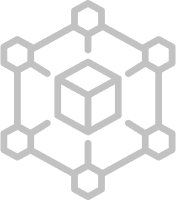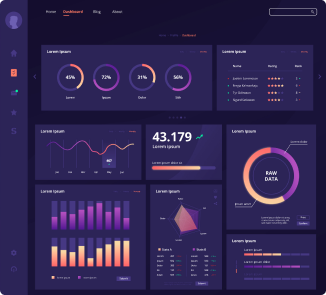Executive Summary
Capital markets and post-trade settlement processes have long awaited a digital revolution. Our client, with a keen understanding of this necessity, approached us to help actualize their vision of transforming the post-trade settlement experience.
Ionixx led a comprehensive technology modernization drive, which resulted in the creation of a state-of-the-art post-trade settlement platform. This platform features advanced automation to streamline complex back-office workflows. It replaces outdated batch-processing systems with real-time data processing, ensuring our client stays ahead in regulatory compliance and operational efficiency.
Some prominent outcomes
 Ionixx had delivered several such brokerage solutions in the past. Our diverse experience in the capital markets gave us good leverage to get it right.
Ionixx had delivered several such brokerage solutions in the past. Our diverse experience in the capital markets gave us good leverage to get it right.
Three Key Objectives of The Digital Transformation
Scalability, Interoperability, and Future-proofing were at the core of the tech modernization strategy.
Scalability
With an expanding customer base and new asset classes (derivatives, fixed income, FX, and crypto assets) emerging, it was critical for our client to raise the bar on building proficient systems that would promptly consolidate data and workflows.
- This required a highly scalable technology
architecture that could: - Handle 10X the current user base.
- Minimize processing costs significantly.
- Adapt to future innovation.
Interoperability
Rapidly intensifying trade volumes meant large amounts of data. We had to rethink our client's data handling capabilities and build a robust data management framework. Such a framework would radically reduce data complexity, address data fragmentation, improve data reconciliation, and increase data security.
- Interoperability within systems would help
creates the ability to: - Access data from multiple systems and in multiple formats, transmitting them across several intermediaries, thus eliminating data fragmentation.
- Optimize cost and speed.
- Streamline data transfer through secure access protocols, adapters, and APIs.
- Give the user a scalable, flexible, and transparent post-trade experience.
Future-proofing
The trading landscape is highly volatile with evolving regulations, dynamic asset classes, and high competition. We wanted to make sure that the investment prepares our client for the future. This meant thoughtful technology selection, leaving spaces for future builds, and flexible architecture.
- A futuristic outlook was necessary to enable innovation and to:
- Boost margins and stay competitive.
- Mitigate cost overruns and integration risks.
- Improve overall process and operational efficiency operational efficiency.
- Deliver high-quality service to multiple institutions, all along with adapting to newer business models.

Key Success Areas through The Digital Transformation
Near Real-time Transactions Processing
Moving away from typical end-of-the-day batch processing to a system where trades are validated, matched, and confirmed within the same day.
Improved Trade Reconciliation
For data to flow seamlessly between different systems (middle & back office and legacy & modular microservices), structured and automated workflows were put in place to enable faster reconciliation of trades across the entire transaction lifecycle.
Enhanced Regulatory Reporting & Compliance
With real-time dashboard views of all compliance reports, operations can manage errors as they get rejected by regulatory board, improving the compliance reporting process significantly.
A Seamless Platform Experience
An inconsistent user experience was replaced with an intuitive platform experience, scoring high on interactivity.

Challenges Along The Way page
As our client was at the cusp of innovation and growth, it was important to address the inflexible and unscalable systems in order to be able to support dynamic product, customer, and regulatory growth.

"We worked our way through the several challenges that the existing technology architecture posed. Close collaboration, everyday interactions for iterative improvements, and an incremental approach to technology modernization underscored the digital transformation."
Muniraj Muniappan,
Delivery Manager, Ionixx Technologies
Here’s a detailed breakdown of the challenges encountered during the digital transformation journey.
Existing legacy architecture and its
inability to support scale
The existing post-trade system built on (.NET) was prone to operational bottlenecks, relied heavily on manual processes and was inherently unable to support new asset classes and instruments. This was causing several operational inefficiencies from both a cost and performance standpoint, thus inhibiting business growth.
The existing .NET system was unable to handle huge volumes of trade leading to system crashes and delays in trade processing (both trade settlement and reconciliation delays).
As our customer was at the cusp of innovation and growth, it was important to address the inflexible and unscalable systems in order to be able to support dynamic product, customer, and regulatory growth.
Poor regulatory compliance, and inadequate response to real-time regulatory changes
The capital markets landscape witnesses a gamut of regulatory requirements every so often, and reporting & compliance systems need access to data streams in real-time. The legacy system could not keep pace with these growing regulatory mandates considering data was muddled across disparate systems, rendering inefficiencies with mission-critical regulatory compliance.
With data operating in silos on the legacy system, it was important to offer a unified and consolidated view of data with automated regulatory notifications and dynamic reporting. This would allow better-reconciled trades, improving regulatory compliance timeliness across the post-trade lifecycle.

Team Composition, Timeline, And Tech Stack
Ionixx's team comprised a multi-disciplinary group of designers, developers, functional leads, and QA & Automation engineers. Over a timeline of 9 months, we helped our customer achieve post-trade modernization success.
Team Composition
Tech Stack
- Backend Programming LanguagePython (Django)
- Deployment & MonitoringKubernetes
- ArchitectureMicroservices Architecture
- Frontend LanguageReactJS

How Did Ionixx Enable Our Customer's Digital Transformation?
Through a collaborative approach to incremental technology transition with our client's business teams, we devised a strategy to address each of the challenges specifically.
Workflow
automationReplaced manually intensive workflows, preventing error-prone trade entries
APIs for
interoperabilityAddressed siloed and fragmented data,thus enhancing visibility and decision-making capabilities
Modern microservices
architectureA highly modular system on top of the existing legacy system that reduced operational bottlenecks and increased overall efficiency

Workflow Automation to Connect Middle & Back-office Operations - Imperative for T+1
One of the most important functions within our customers post-trade module involved streamlining the way trade allocations were handled. We built a rules engine to automate the core of this function and enable broker-dealers to pre-define complex allocation structures.
A largely manual function, corporate actions, were completely automated ensuring no event is missed or erroneous information provided to and acted upon by internal decision makers or external clients. It provided processing visibility to our customer against workflows specific to any event type, ensuring compliance to best practice and adherence to internal/market deadlines.
By moving from batch processing to straight through processing (STP), we helped our client become well-poised to aim for T+1 settlement, streamlining middle and back-office coordination.
Several processes that are currently carried out the day after trade execution like allocation, confirmation, and affirmation are now aimed at completion on the same day.

Creating APIs for Seamless Integration with Other Systems
Through a phased transition to Java architecture, we built modular microservices on top of the legacy system with core APIs that could be integrated with external trading platforms.
To address the challenge of siloed and fragmented data, we built APIs from scratch to ensure seamless data capture and transmission across the middle and back end systems.
This helped preempt problems arising in the trade settlement process well in advance.
This type of API-led data transmission helped our customers customers actively stay on top of crucial regulatory mandates and prevent settlement fails and overturn costly Central Securities Depositories Regulation (CSDR) fines.
APIs also helped with the seamless integration of the new technology into the legacy system, enabling a modern approach to application connectivity.

Turning Everything into Real-Time
From a Reactive to a Proactive Approach with Microservices
With a growing trend of ever-shortening settlement cycles, the need to improve automation levels also intensified a notch. As firms today are looking to accelerate the settlement cycle (T+2 to T+1), ensuring real-time data capabilities is a no-brainer, not only for trade clearing and settlement but also to manage trade breaks and exceptions.
By introducing a modular based, microservices based technology, we helped fetch data from important core systems in the right format, thus simplifying reporting and regulatory compliance.
We enabled the transition from legacy architecture to a modern microservices architecture to handle data intensive tasks and optimize application performance.
By introducing microservices architecture on top of the existing post trade platform, we helped reduce post trade processing costs, adapt to new regulations and technology, and quickly and efficiently launch new products and enter new markets.

Incremental Change over Big Bang Change
After several considerations from both a functional and cost standpoint, we realized that a complete overhaul of the legacy platform was going to be a complex and risky proposition.
Rather than entirely doing away with the legacy system, we suggested rehauling it by building a microservices-based platform on top with high modularity and powerful automation capabilities.
We made an incremental transition that favored a componentized and modular approach, reducing downtimes and operational costs.
Designing a Platform Experience for a Seamless Post-trade Journey
By building a platform-based ecosystem for financial market infrastructure, we were able to achieve seamless collaboration between broker-dealers and financial intermediaries.
We built a design library to enable a unified user experience across the entire suite of applications used by our customer's cross-functional teams. The design library helped with quicker onboarding of new customers by bringing brand consistency and enabling the creation of a unified brand.
We adopted principles of atomic design and effectively used auto layouts to manage a large team of designers striving to maintain UI consistency through easy to modify buttons and fields.

Wrapping up
Ionixx played a critical role in facilitating our client's digital transformation of their post-trade settlement operations.
Through careful systems and software selection, technology upgrades, microservices modernization, and a design overhaul, Ionixx delivered on its promise in time.
Working together as a team, we were able to avoid failure traps by identifying potential problems early and taking proactive measures to mitigate them.
Overall, the partnership with our client was a clear example of the benefits of collaborative efforts and a willingness to embrace digital transformation to stay ahead of the curve in today's rapidly evolving capital markets landscape.

Our Customer
Our client is a registered broker/dealer since 2012 that is focused on creating innovative trading, investment, and clearing infrastructure to power other brokers, fintechs, and investment advisors.
As a leading fintech solutions provider for capital markets, Ionixx Technologies is committed to revolutionizing the financial industry by helping financial institutions, startups, and FinTech companies access innovative digital technology. With a deep industry expertise, Ionixx actively champions the cause of digital innovation. Through our state-of-the-art capabilities and a nuanced process-oriented approach, we enable our customers to accelerate innovation and seamlessly transition to the digital age.



 +1 (909) 757 - 3707
+1 (909) 757 - 3707 info@ionixxtech.com
info@ionixxtech.com https://www.ionixxtech.com/
https://www.ionixxtech.com/